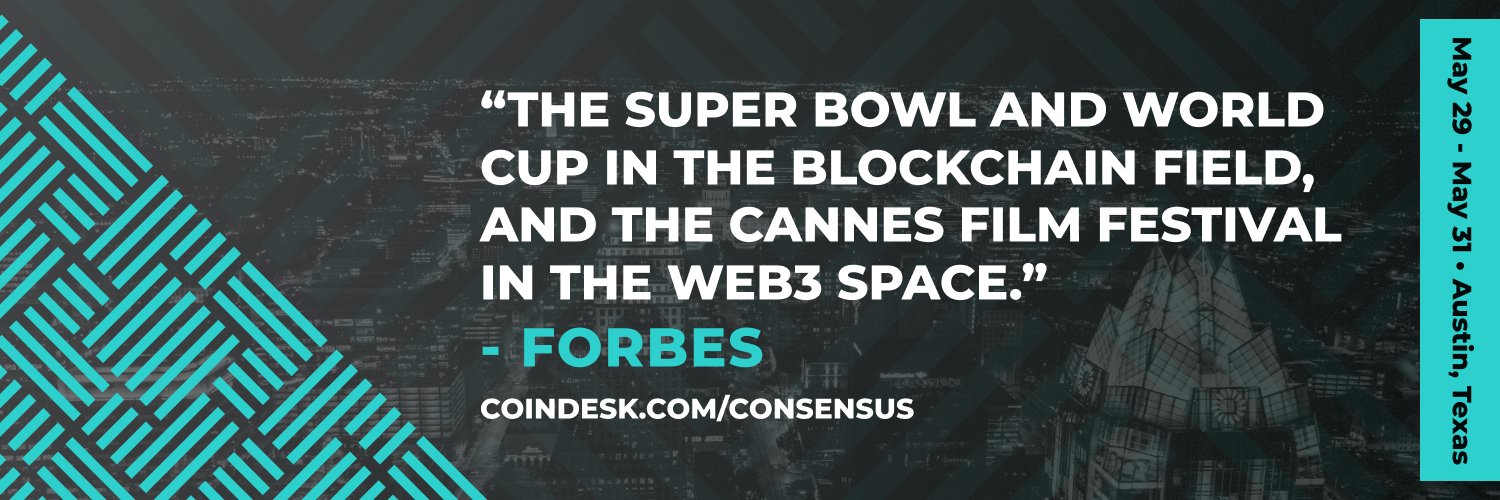Unlock the secrets of Web3 marketing as I team up with Cahill Camden in an insightful exchange on crafting crystal-clear messaging for your startup.
Prepare to have your thoughts provoked as Cahill unravels the distinct advantages of a fractional CMO's approach—bridging cost efficiency with a treasure trove of diverse experiences. Through the lens of his journey from sales to the forefront of Web3 marketing, this episode promises a wealth of knowledge that will reshape how you perceive the intersection of strategy, management, and conversion rate optimization.
The conversation transcends into the realm of community cultivation, where the blueprint for initiating and nurturing a community from the ground up is laid bare. Feel the pulse of content creation, the strategic use of social media, and the impact of live events in fostering unparalleled engagement. We break down the evolution of a nascent community into a robust ecosystem, discussing the clever deployment of tools like free mints and the power of social badges in rallying a dedicated tribe around your brand.
As the episode reaches its crescendo, we dissect the latest trends in community building and NFT marketing, with actionable insights into the use of blockchain technology for verification methods that spur interaction. I share my own adventures in community building and client acquisition, serving up tips on how to navigate the incessant flood of notifications and why company leaders must stay hands-on with their communities. This is not just another marketing talk; it's a treasure trove of strategies and personal experiences that will empower you to harness the potential of Web3 to its fullest.
Ready to upgrade your Web3 marketing strategy? Don’t miss Consensus 2024 on May 29-31 in Austin, Texas. It is the largest and longest-running event on crypto, blockchain and Web3. Use code CMOSTORIES to get 15% off your pass at www.consensus2024.coindesk.com
Unlocking the Power of Precision: A Guide to Startup Success
Ever wondered why some startups soar while others seem to stumble right out of the gate? It's all in the message.
In the fast-paced world of startups, especially those navigating the complex terrain of Web3, the clarity of your message can make or break your success. From attracting the right users to building a vibrant community and establishing a recognizable brand, the power of a well-crafted message is undeniable. But how do you ensure your message hits the mark? And what role does a fractional Chief Marketing Officer (CMO) play in this equation? Moreover, as the digital marketplace evolves, how does content creation become a pivotal strategy for client acquisition?
Understanding the nuances of clear messaging, the strategic importance of a fractional CMO, and the evolving tactics in marketing within the Web3 space is more than just beneficial—it's essential for any startup looking to make its mark. These elements are not just pieces of the puzzle; they are the blueprint for building a successful, recognizable brand that resonates with its intended audience.
Let's unravel these questions and more, providing you with insights and strategies to elevate your startup from just another name in the crowd to a standout success story.
The Importance of Clear Messaging in Startups
1.1. The common issue of broad messaging in startups
In the bustling world of startups, particularly those navigating the intricate Web3 space, a prevalent challenge emerges: the tendency to cast a wide net with messaging. This approach, while seemingly inclusive, often leads to a dilution of the core message. The ambition to cover multiple bases at once can inadvertently result in a message that lacks specificity and clarity. This broad messaging approach can confuse potential users and stakeholders, making it difficult for them to grasp the unique value proposition of the startup.
1.2. The need for clear messaging to attract the right users
The cornerstone of building a successful startup ecosystem lies in attracting the right users to your community. This is where the power of clear messaging becomes undeniable. A well-articated, concise message acts as a beacon, drawing in users who resonate with the startup's vision and values. It's about creating a message that speaks directly to the needs and desires of your target audience, making them feel seen and understood. This alignment between the startup's offerings and the users' expectations sets the stage for a thriving community.
1.3. The role of clear messaging in community building
Community building is an art that thrives on clarity and precision in messaging. A clear message serves as the foundation upon which communities are built and nurtured. It facilitates a shared understanding and fosters a sense of belonging among community members. By clearly articulating what the startup stands for and what it aims to achieve, you can galvanize a community of passionate supporters who are eager to contribute to the startup's growth. This communal effort is instrumental in driving the startup forward, powered by a collective belief in the startup's mission.
1.4. The impact of clear messaging on brand recognition
Beyond attracting the right users and building a community, clear messaging plays a pivotal role in establishing and enhancing brand recognition. In a marketplace saturated with competing voices, a startup's ability to stand out hinges on its message's clarity and distinctiveness. A clear, memorable message cuts through the noise, making the brand more recognizable and relatable to its intended audience. This recognition is not just about being known; it's about being known for something specific, something that resonates deeply with your audience. As the startup's message becomes more ingrained in the minds of its community, it lays the groundwork for lasting brand loyalty and advocacy.
The Role of a Fractional CMO
2.1. The two main components of a fractional CMO: strategy and management
At the heart of a fractional Chief Marketing Officer's (CMO) role lie two fundamental components: strategy and management. This dual focus allows a fractional CMO to not only devise the overarching marketing strategies that will guide a company's user acquisition and growth but also to oversee the execution of these strategies through effective management. The strategic aspect involves a deep understanding of the market, the identification of target audiences, and the selection of optimal channels for engagement. It's about plotting the course for where the company aims to go in the vast ocean of the market. On the other hand, the management component is all about orchestrating the various moving parts within the marketing department and beyond. This includes coordinating with designers, developers, content creators, influencers, and the sales team, ensuring that everyone is aligned and moving towards the same goals.
2.2. The importance of conversion rate optimization
Beyond strategy and management, a critical area of focus for any fractional CMO is conversion rate optimization (CRO). This aspect delves into the 'nitty-gritty' of marketing, analyzing data and metrics to understand how users are interacting with a company's digital assets. CRO is about making informed decisions to tweak and enhance the user experience, aiming to convert a higher percentage of visitors into active users or customers. It involves a meticulous examination of analytics to identify bottlenecks in the conversion funnel and implementing strategies to overcome these obstacles. By optimizing conversion rates, companies can achieve a higher return on investment from their marketing efforts, making each dollar spent go further in attracting and retaining users.
2.3. The difference between a fractional CMO and a full-time CMO
Understanding the distinction between a fractional CMO and a full-time CMO is essential for companies considering their marketing leadership options. The primary difference lies in the engagement model and the breadth of experience each brings to the table. A fractional CMO, by definition, splits their time across multiple companies, offering a part-time yet highly strategic role. This model provides businesses with access to senior marketing expertise without the full-time cost, including salaries, benefits, and taxes associated with an internal hire. Conversely, a full-time CMO dedicates their entire working capacity to a single company, potentially offering deeper immersion in the company's culture and day-to-day operations but at a significantly higher cost.
2.4. The benefits of a fractional CMO over an internal hire
Opting for a fractional CMO presents several advantages over hiring a full-time internal CMO. Firstly, the cost efficiency is undeniable, as companies can leverage top-tier marketing expertise without the hefty financial commitment of a full-time executive. Secondly, a fractional CMO brings a wealth of diverse experience and insights from working with multiple companies and industries. This exposure to a variety of marketing challenges and solutions enriches their strategic approach, allowing them to apply successful tactics from one context to another swiftly. Moreover, this model fosters a dynamic and flexible marketing leadership that can adapt to the evolving needs of the company, scaling up or down as required. In essence, a fractional CMO offers a blend of strategic depth, operational flexibility, and cost-effectiveness that is particularly appealing to startups and growing businesses in the fast-paced tech and Web3 sectors.
The Evolution of Marketing in the Web3 Space
3.1. The shift from advertising to content-driven marketing
The Web3 space has witnessed a significant transformation in marketing strategies over the years, moving away from traditional advertising towards a more content-driven approach. This shift reflects a broader change in consumer behavior, where audiences seek value and authenticity over blatant sales pitches. Content-driven marketing in the Web3 domain involves creating and sharing valuable content that resonates with the target audience, such as blog posts, whitepapers, and educational videos. This approach not only helps in establishing thought leadership but also in building trust with potential users. The key to success in this strategy lies in understanding the audience's needs and interests and crafting content that addresses those while subtly integrating the brand's message.
3.2. The emergence of community as a key marketing strategy
Alongside the rise of content-driven marketing, the concept of community has taken center stage as a pivotal element of Web3 marketing strategies. The emphasis on community stems from the decentralized nature of Web3 technologies, where collaboration and shared ownership are fundamental principles. Building a strong, engaged community around a project can significantly amplify its reach and credibility. This involves creating platforms for interaction, such as forums, social media groups, and Discord channels, where users can connect, share ideas, and provide feedback. An active and passionate community not only serves as a powerful marketing force but also contributes to the project's development through collective intelligence and support.
3.3. The rise of live events in community building
A notable trend in strengthening community bonds within the Web3 space is the increasing popularity of live events. These events, including AMAs (Ask Me Anything), webinars, and live streams, offer a real-time platform for interaction between the project team and the community. They provide an opportunity for direct communication, allowing the team to address questions, share updates, and showcase their expertise. Live events also add a human touch to digital projects, making the team more relatable and accessible to the community. This level of engagement fosters a sense of belonging among community members, encouraging loyalty and long-term support for the project.
3.4. The challenges of different market cycles in the Web3 space
Navigating the Web3 space is not without its challenges, particularly due to the volatile nature of market cycles. These cycles can significantly impact marketing strategies and community engagement. During boom cycles, there's a surge in interest and participation, making it easier to attract users and build communities. However, the real test comes during down cycles, when interest wanes, and maintaining engagement becomes more challenging. Projects must adapt their marketing strategies to these changing conditions, focusing on providing consistent value and fostering genuine connections with their community. This might involve doubling down on educational content, offering more interactive events, and finding innovative ways to reward and retain community members. The ability to adapt and remain relevant through different market cycles is a testament to a project's resilience and commitment to its community.
Strategies for Community Growth and Engagement
4.1. The importance of starting with a clear understanding of the product or service
At the foundation of any successful community growth strategy lies a crystal-clear understanding of the product or service being offered. This clarity is not just about knowing what the product does or the problem it solves, but also about articulating this understanding in a way that resonates with the target audience. A well-defined message helps in attracting the right kind of users to the community. It's akin to setting up a beacon that guides potential members through the noise of the digital world, directly to your doorstep. This clarity in messaging ensures that every piece of content, every interaction, and every marketing effort is coherent, consistent, and aligned with the core value proposition of the product or service. It's about creating a narrative that people can connect with, believe in, and want to be a part of.
4.2. The use of free mints, drops, and rewards to drive user growth
In the competitive space of Web3, where numerous projects vie for attention, offering free mints, drops, and rewards has emerged as a powerful strategy to drive user growth. These incentives serve as an initial hook that draws people into the community. For instance, a project might offer a limited number of free NFTs to its early supporters, or provide exclusive access to certain features as a reward for community engagement. Such strategies not only help in increasing the numbers but also in fostering a sense of ownership and loyalty among community members. The key here is to ensure that these rewards offer real value to the recipients and are not just seen as gimmicks. When executed thoughtfully, these incentives can create a buzz around the project, encouraging users to share their positive experiences with others, thereby fueling organic growth.
4.3. The role of social badgements in community growth
Social badgements are emerging as a novel way to acknowledge and reward community members' contributions and engagement. These digital badges or tokens serve as a form of social proof, showcasing an individual's early support, contributions, or achievements within the community. They tap into the human desire for recognition and status, motivating members to participate more actively. For example, a community member might receive a badge for being among the first to join, for contributing valuable insights, or for helping spread the word about the project. These badges can then be displayed on user profiles, acting as a visible marker of their involvement and commitment. This not only enhances the individual's standing within the community but also encourages others to increase their engagement in hopes of receiving similar recognition.
4.4. The importance of content creation and partnerships in attracting new community members
Content creation and strategic partnerships play a critical role in attracting new members to a community. High-quality, informative, and engaging content can capture the interest of potential users, drawing them into the community. This content can take various forms, including blog posts, videos, infographics, and more, each designed to educate, entertain, or inspire the target audience. Partnerships, on the other hand, can extend the reach of this content, exposing it to new audiences. Collaborating with influencers, thought leaders, or other projects can lend credibility to the community and attract members who trust these entities. These partnerships can also lead to co-created content, events, or initiatives that provide additional value to both communities. Ultimately, the combination of compelling content and strategic partnerships can significantly amplify a community's growth and engagement, creating a vibrant and dynamic ecosystem around the project.
Verification Techniques in Web3 and Web2
5.1. The use of badges for verification in Discord and blockchain
In the digital age, where online communities form the backbone of many tech platforms, verification becomes a critical tool for fostering trust and security. Specifically, in platforms like Discord and various blockchain applications, badges serve as a powerful means of verification. These badges are not just symbols; they are digital representations of a user's identity, achievements, or membership within a community. For instance, on Discord, badges can be linked to a user's account to verify their participation in an event or their status as a member of a particular group. Similarly, in the blockchain ecosystem, badges, often in the form of Non-Fungible Tokens (NFTs), can be stored in a user's digital wallet. When a user connects their wallet to a platform, the presence of a specific badge can automatically verify their eligibility for certain access or rewards. This seamless integration of badges into user verification processes highlights the innovative ways Web3 technologies are being leveraged to enhance community engagement and security.
5.2. The technical and financial aspects of verification
Implementing verification techniques, especially those that leverage blockchain technology, involves a blend of technical complexity and financial considerations. On the technical side, setting up a system that can check for specific badges or tokens in a user's wallet requires a solid understanding of blockchain technology and smart contracts. This might involve coding custom solutions or integrating with existing blockchain services, which can take time and require specialized knowledge. Financially, there are costs associated with deploying smart contracts on a blockchain, not to mention the potential transaction fees users might incur when acquiring or transferring badges. Despite these challenges, the benefits of a secure and automated verification system can outweigh the costs, particularly for communities looking to scale or offer exclusive content or rewards to verified members.
5.3. The potential of verification for community growth
The strategic use of verification techniques can significantly contribute to community growth. By offering exclusive access or rewards to verified members, communities can create a sense of exclusivity and value that attracts more users. For example, a community might offer early access to content, special discounts, or unique digital items to users who have verified their membership through a badge. This not only incentivizes participation but also encourages members to maintain their engagement with the community over time. Furthermore, verification can help in building trust among community members, as it provides a transparent way to recognize and reward genuine contributions and achievements. As communities continue to evolve, leveraging verification as a tool for growth and engagement will likely become increasingly prevalent.
5.4. The application of verification techniques in the traditional tech world
While much of the discussion around verification techniques focuses on Web3, these strategies are equally applicable in the Web2 or traditional tech world. Although the implementation might require more manual effort, such as manually checking for proof of purchase or participation, the underlying principles remain the same. For instance, a tech company could offer special access to a beta version of their software or exclusive content to users who can verify their purchase or participation in an event. This approach not only enhances user engagement but also provides valuable feedback and builds a loyal user base. Moreover, as the tech world continues to bridge the gap between Web2 and Web3, the integration of blockchain-based verification methods into traditional platforms could streamline these processes, making them more efficient and secure. Ultimately, regardless of the technology used, the goal of verification is to foster a trusted and engaged community, which is a cornerstone of success in both the Web3 and Web2 ecosystems.
The Role of Content in Client Acquisition
6.1. The importance of content creation in client acquisition
In the bustling digital marketplace, content creation emerges as a cornerstone for acquiring new clients. It's not just about broadcasting your services or products; it's about sharing knowledge, insights, and stories that resonate with your target audience. This approach helps in building a brand's authority and trustworthiness, which are critical factors in a potential client's decision-making process. For instance, a well-crafted article that addresses a common problem or question in your industry can attract readers who are seeking solutions, thereby introducing them to your brand. Over time, consistent and valuable content can convert readers into loyal followers and, eventually, into clients. This strategy is particularly effective in industries where the decision-making process is lengthy and requires a substantial amount of trust in the provider's expertise.
6.2. The use of newsletters and podcasts for content distribution
Newsletters and podcasts stand out as powerful tools for distributing content directly to an engaged audience. Newsletters, sent via email, offer a personal touch and can be tailored to meet the specific interests of your subscriber base. They provide a platform to share updates, insights, and valuable content that keeps your audience informed and engaged between purchases or contracts. Podcasts, on the other hand, tap into the growing demand for audio content, allowing listeners to consume information on the go. By hosting or guesting on podcasts relevant to your industry, you can reach a wider audience, share your expertise in a conversational format, and build a connection with potential clients who prefer audio content. Both newsletters and podcasts can significantly enhance your content distribution strategy, driving engagement and ultimately leading to client acquisition.
6.3. The role of communities in content distribution
Communities, whether online forums, social media groups, or platforms like Discord, play a vital role in content distribution. These communities bring together individuals with shared interests, making them ideal places to share content that's highly relevant and valuable to the group. By actively participating in these communities, not only can you gain insights into the needs and preferences of your target audience, but you can also establish yourself as a thought leader by contributing useful content. This approach fosters a sense of trust and credibility among community members, who are more likely to turn to you when they need the products or services you offer. Moreover, engaging with communities allows for real-time feedback and discussions, further enhancing the relationship between your brand and potential clients.
6.4. The impact of paid media acquisition on content distribution
While organic content distribution plays a critical role in building long-term relationships with your audience, paid media acquisition can amplify your reach and accelerate client acquisition. Platforms like Facebook, Instagram, and LinkedIn offer targeted advertising options that allow you to place your content in front of a specific audience based on demographics, interests, and behaviors. This targeted approach ensures that your content is seen by individuals who are most likely to be interested in your offerings, increasing the chances of conversion. Additionally, paid media can be used to promote high-performing content, such as popular blog posts or videos, further enhancing their visibility and impact. When combined with a solid organic content strategy, paid media acquisition can significantly boost your client acquisition efforts, driving both immediate results and long-term growth.
Managing Notifications and Community Engagement
7.1. The importance of managing notifications in Discord and Telegram
In the digital age, where instant communication is the norm, managing notifications becomes a critical aspect of maintaining productivity and focus. Platforms like Discord and Telegram are powerful tools for community engagement, but without proper management, their constant notifications can become overwhelming. It's essential to strike a balance between staying informed and avoiding distraction. By muting servers or groups that are not immediately relevant, you can control the influx of notifications and ensure that your attention is only drawn when necessary. This approach allows you to dedicate time to deep work without interruptions, while still being able to engage with your communities when you choose to.
7.2. The impact of notifications on productivity and deep work time
Notifications, if not managed well, can significantly disrupt productivity and the ability to engage in deep work. Deep work, the state of concentrated effort on tasks that require cognitive heavy-lifting, is essential for problem-solving and creativity. Constant interruptions from notifications fragment attention and make it challenging to return to a state of deep concentration. This can lead to a decrease in the quality of work and an increase in the time taken to complete tasks. By selectively muting notifications and allocating specific times to check them, you can protect your deep work time, enhancing both efficiency and output quality.
7.3. The role of meaningful engagement in community growth
Meaningful engagement is the cornerstone of community growth and sustainability. In the context of platforms like Discord, Telegram, or even LinkedIn, engaging in a way that adds value to the conversation can significantly impact the perception of your brand or personal profile. Answering questions, providing insights, or sharing relevant content helps in establishing authority and trust within the community. This type of engagement fosters a positive environment where members feel valued and supported, encouraging active participation and, ultimately, leading to the growth of the community. For businesses and individuals alike, this growth translates into a larger, more engaged audience that is more likely to convert into clients or collaborators.
7.4. The benefits of contributing to communities for client acquisition
Contributing to communities not only aids in their growth but also serves as an effective strategy for client acquisition. By actively participating and adding value, you make yourself visible to potential clients within these communities. This visibility, coupled with the demonstration of your expertise and willingness to help, builds a strong personal or brand reputation. Many times, clients are acquired through these communities without the need for traditional sales pitches; the quality of your contributions speaks for itself. Furthermore, this approach allows for organic relationship building, which often leads to long-term collaborations and referrals. In essence, contributing to communities should be viewed not just as a marketing tactic, but as a genuine effort to engage and add value, with client acquisition being a natural byproduct of these efforts.
Current Projects and Future Excitements in Web3 Space
8.1. The Introduction of Stadiax, a Gaming Platform
Diving into the vibrant world of gaming, the project Stadiax emerges as a beacon of innovation. This gaming platform is not just another addition to the digital entertainment sphere; it represents a significant leap towards integrating cutting-edge technology with engaging gameplay. Stadiax aims to offer a unique experience to gamers by leveraging the capabilities of Web3 to enhance user interaction and ownership through blockchain technology. The anticipation surrounding its launch is palpable, with the promise of introducing games that are not only entertaining but also offer a new level of immersion and community engagement.
8.2. The Development of Press Jockey, an AI Startup for PR
In the ever-evolving field of public relations, the introduction of Press Jockey, an AI startup, marks a significant milestone. This venture aims to revolutionize the way businesses approach PR by integrating artificial intelligence into their strategies. With the development of a Chrome extension, Press Jockey plans to make AI accessible on various platforms, enabling users to pitch more effectively and efficiently. This tool is designed to assist in navigating the complex terrain of media outreach, making it simpler for businesses to get their stories heard. The potential impact of Press Jockey on the PR industry is immense, offering a glimpse into the future where technology and communication converge seamlessly.
8.3. The Creation of a Course on Community Growth
Recognizing the pivotal role of community in the success of any venture, the creation of a course dedicated to community growth is a timely initiative. This course is designed to serve as a blueprint for both Web2 and Web3 entities, providing them with the tools and strategies needed to cultivate a vibrant and engaged community. Covering everything from the basics of setting up a community to advanced techniques for fostering engagement and loyalty, the course aims to be a one-stop solution for anyone looking to amplify their reach and impact. By sharing proven templates and tactics that have led to the growth of communities into tens of thousands of users, this course promises to be an invaluable resource for tech companies, startups, and entrepreneurs alike.
8.4. The Anticipation for the Growth of Startups in the Web3 Ecosystem
The Web3 ecosystem stands on the brink of a transformative phase, with startups playing a critical role in shaping its future. The excitement for what lies ahead is grounded in the belief that Web3 has the potential to democratize the internet, making it more accessible, transparent, and user-centric. The influx of innovative startups into this space is not just welcomed but necessary for the ecosystem to thrive. These startups, with their fresh ideas and disruptive technologies, are the lifeblood of Web3, driving its evolution and ensuring its relevance. The anticipation for their growth is not merely about technological advancements but about the promise of creating a more equitable digital world. As these startups flourish, they bring us closer to realizing the full potential of Web3, making it an exciting time to be part of this revolutionary shift.
Wrapping It Up
As we draw this discussion to a close, it's clear that the digital and Web3 landscapes are teeming with opportunities and challenges alike. Here are the key takeaways:
Clear messaging and community engagement are pivotal for startups and projects in the Web3 space, ensuring they attract the right audience and foster a loyal user base.
The role of a fractional CMO, leveraging strategies like conversion rate optimization and clear messaging, can significantly impact a startup's growth trajectory.
Content creation, strategic partnerships, and innovative verification techniques are essential tools for building trust, engagement, and ultimately driving user and client acquisition.
With the rapid evolution of technology and marketing strategies, how will startups continue to adapt and thrive in the ever-changing digital ecosystem? Until we meet again, let's ponder on this question.

Cahill Camden
KEY HIGHLIGHTS
[01:38] Could you briefly explain your role as a fractional CMO and outline the differences between hiring an in-house CMO versus working with an agency?
[04:51] What was your background prior to entering the Web3 space, and what sparked your journey into it?
[06:35] What are the things that you are working on at the moment?
[08:22] What challenges did you face, and how did you achieve significant growth in your communities?
[10:39] Could you elaborate on how you initially built and grew your community engagement? Were there specific phases or strategies you employed to start and expand your community involvement?
[13:27] How do you attract and bring people into your community initially? Do you primarily use content, spaces, or other methods?
[16:35] What are some examples of utility that early members of a community could have to prove they were among the first?
[19:03] Will your course be available for purchase through traditional methods, or will it be accessible via NFTs or cryptocurrency?
[20:37] How do you typically acquire clients? Do you rely on referrals, create content, or participate as a guest on podcasts like this one? How do clients usually find you?
[21:57] What are some tips for managing Discord servers and avoiding feeling overwhelmed by the multitude of servers one may be a part of? How can one effectively structure and organize themselves to maintain focus and engagement?
[25:49] Any final thoughts for our listeners? Also, what exciting projects or developments are you currently involved in?
NOTABLE QUOTES
“The way I like to explain fractional CMO is there's really two main components to it. There's strategy and management... Then there's the conversion rate optimization part of it.”
“I've been in Web3, blockchain, whatever you want, whatever new industry term you want to call it...I really believe in it.”
“A lot of this growth has come from the partnerships that I've built, the free mints that we've done.”
“You got to push content on some of those platforms or all of those platforms.”
“You've got to start small, typically, unless you've got budgets and then you can go bigger.”
MENTIONED RESOURCES
Digital Vision: https://digitalvision.io/
CONNECT







